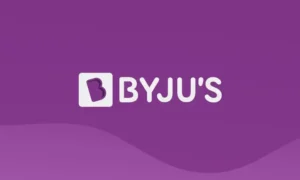Are you tired of sorting through stacks of resumes and conducting endless rounds of interviews in search of the perfect candidate? In today’s fast-paced world, traditional hiring methods seem to be falling short. But fear not, because technology is here to revolutionize the way we staff our teams! With cutting-edge tools and software at our fingertips, it’s time to dive into the exciting world of tech-savvy hiring strategies. In this blog post, we will explore the advantages and disadvantages of staffing technology, helping you navigate through this digital landscape with ease. So buckle up and get ready for a game-changing journey towards finding top talent efficiently and effectively!
Why use staffing technology?
Staffing technology can be a valuable tool for employers when searching for the best candidates. There are many advantages to using staffing technology, including:
- The ability to search through a large pool of qualified candidates quickly and easily
- The ability to track applicant progress and performance
- The ability to view all applicants in one place
- The ability to manage candidate files in a central location
However, there are also some disadvantages to using staffing technology, such as:
The increased cost of employing staff through staffing technology
The potential for data breaches and privacy violations
Advantages of Staffing Technology
Staffing technology has become an increasingly popular way to find and interview candidates. However, there are several advantages and disadvantages to using this type of technology.
1. Speed: Using staffing technology can speed up the process of finding a candidate for a position. Instead of having to go through multiple interviews, you can quickly review resumes and conduct online searches.
2. Accuracy: When using staffing technology, you can be certain that all the information you need to make a decision is at your fingertips. This means less time wasted on irrelevant information or mistakes made in interviews.
3. Cost efficiency: By using staffing technology, you can save money on recruitment costs. This is because you will not have to pay for travel expenses or office space rental fees.
4. Flexibility: Staffing technology allows for greater flexibility when it comes to working hours and location. You can work from home if necessary, which may be more convenient for candidates who live far away from the workplace.
5. Privacy: Some people may prefer to interview with employers face-to-face rather than through email or telephone conversations. With staffing technology, you can ensure that all communication between yourself and potential employees is private and confidential.
Disadvantages of staffing technology
Staffing technology is a great way to find qualified candidates quickly and easily, but there are also some disadvantages to using this type of system. One disadvantage is that staffing technology can be difficult to use if you don’t have a lot of experience with it. Another disadvantage is that staffing technology can be expensive, so it can be difficult to justify its use if your organization doesn’t need it. Staffing technology may not be as accurate as human hiring, so you may end up with incorrect or incomplete information about a candidate’s qualifications.
Conclusion
When it comes to finding the right staffing technology for your business, there are a number of advantages and disadvantages to consider. By analyzing these factors, you can make an informed decision about which technology is best suited for your needs and ensure that you are getting the most out of your investment.





























